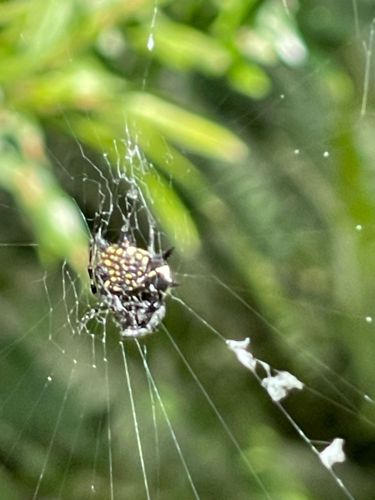Spiny Orb-weaver
Scientific Name: Gasteracantha cancriformis
Order & Family: Araneae, Araneidae (Orb-weaver spiders)
Size: Females typically measure 5-9 mm in length and 10-13 mm in width across the spines. Males are much smaller, usually 2-3 mm.

Natural Habitat
Common in gardens, woodlands, and shrubby areas, often building webs between trees or shrubs. Found in warm climates, particularly in the southeastern United States, Central America, and the Caribbean.
Diet & Feeding
Strictly insectivorous, feeding on a wide variety of small flying insects that get caught in their orb webs, such as flies, mosquitoes, moths, and small beetles.
Behavior Patterns
Known for building intricate orb webs to catch prey. Females are often seen hanging upside down in the center of their webs. They tend to rebuild or repair their webs daily, usually in the early morning. The spiny projections are thought to deter predators. They are generally solitary.
Risks & Benefits
Benefits humans by controlling populations of common pests like flies and mosquitoes. While they possess venom, it is not considered dangerous to humans. A bite might cause mild, localized symptoms like itching or slight pain, similar to a bee sting, but is rarely medically significant. They are not aggressive and will only bite if severely provoked.
Identified on: 9/19/2025